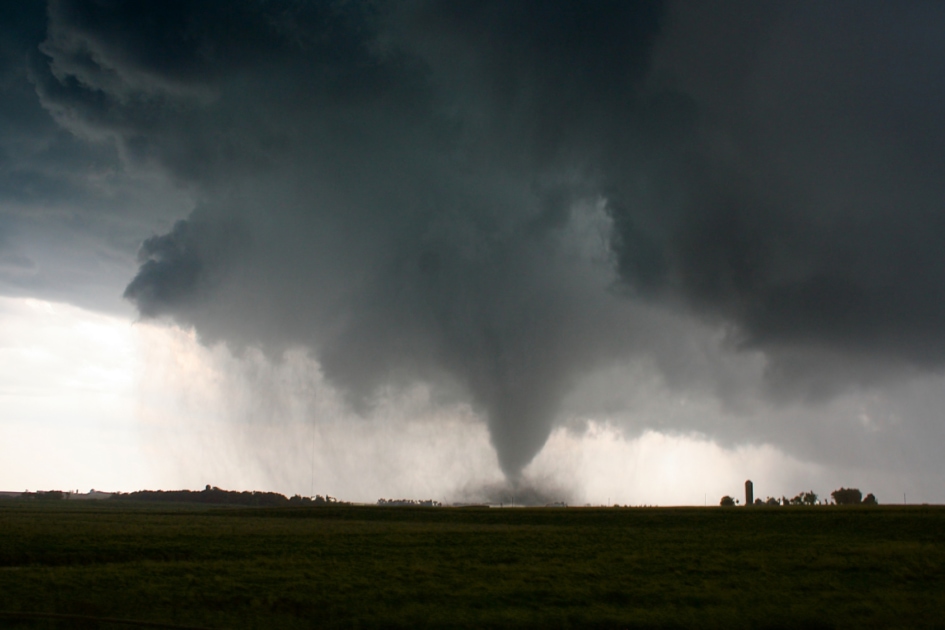Tornado Safety And Survival
Be armed with these tornado facts and important safety tips so you'll know what to do before, during, and after a twister strikes!

According to data from NOAA’s National Centers for Environmental Information’s web site, during 2021, there have 1,175 tornadoes so far. The average number of tornadoes that hit the U.S. annually is around 1,200. While the majority of these storms hit in what is usually called the “tornado season,” tornadoes can happen at any time of the year (including December as 2021 is proving).
On average, tornadoes kill about 70 Americans each year and injure another 1,500.
How Are Tornadoes Measured?
Tornadoes are measured by the Enhanced Fujita Scale, ranging from EF0 – EF5.
According to NOAA, tornadoes can occur at any time of the year, but the traditional period of peak activity is from March through early July. The season differs slightly for various areas of the country: Southern Plains – early June to early July. Gulf Coast – early spring. Northern Plains and upper Midwest -June or July
Tornadoes can also happen at any time of day or night, but most tornadoes occur between 4–9 p.m. And while tornadoes can touch down just about anywhere in North America, they are most likely to occur in the area known as “Tornado Alley,” which runs roughly through the Central Plains from Texas to Nebraska. Within that area, Texas has the highest number of tornadoes, with an average of 124 each year.
Read about the Easter Tornado Tragedy of 1913
Tornado Preparedness
The Red Cross offers these important tornado preparedness tips:
- During any storm, listen to local news or a weather radio to stay informed about tornado watches and warnings.
- Know your community’s warning system. Communities have different ways of warning residents about tornadoes, with many having sirens intended for outdoor warning purposes. Check with your carrier to see if your cell phone can give you alerts.
- Pick a safe room in your home where household members and pets may gather during a tornado. This should be a basement, storm cellar or an interior room on the lowest floor with no windows.
- Practice periodic tornado drills so that everyone knows what to do if a tornado is approaching.
- Consider having your safe room reinforced. Plans for reinforcing an interior room to provide better protection can be found on the FEMA web site.
- Prepare for high winds by removing diseased and damaged limbs from trees.
- Move or secure lawn furniture, trash cans, hanging plants or anything else that can be picked up by the wind and become a projectile.
- Watch for tornado danger signs:
̶ Dark, often greenish clouds – a phenomenon caused by hail
̶ Wall cloud – an isolated lowering of the base of a thunderstorm
̶ Cloud of debris
̶ Large hail
̶ Funnel cloud – a visible rotating extension of the cloud base
̶ Roaring noise
What To Do During A Tornado
- The safest place to be is an underground shelter, basement or safe room.
- If no underground shelter or safe room is available, a small, windowless interior room or hallway on the lowest level of a sturdy building is the safest alternative.
- Mobile homes are not safe during tornadoes or other severe winds.
- Do not seek shelter in a hallway or bathroom of a mobile home.
- If you have access to a sturdy shelter or a vehicle, abandon your mobile home immediately.
- Go to the nearest sturdy building or shelter immediately, using your seat belt if driving.
- Do not wait until you see the tornado.
- If you are caught outdoors, seek shelter in a basement, shelter or sturdy building. If you cannot quickly walk to a shelter:
- If flying debris occurs while you are driving, pull over and park. Now you have the following options as a last resort:
- Stay in the car with the seat belt on. Put your head down below the windows, covering with your hands and a blanket if possible.
- If you can safely get noticeably lower than the level of the roadway, exit your car and lie in that area, covering your head with your hands.
- Your choice should be driven by your specific circumstances.
What To Do After A Tornado
- Continue listening to local news or an NOAA Weather Radio for updated information and instructions.
- If you are away from home, return only when authorities say it is safe to do so.
- Wear long pants, a long-sleeved shirt, and sturdy shoes when examining your walls, doors, staircases, and windows for damage.
- Watch out for fallen power lines or broken gas lines and report them to the utility company immediately.
- Stay out of damaged buildings.
- Use battery-powered flashlights when examining buildings – do NOT use candles.
- If you smell gas or hear a blowing or hissing noise, open a window and get everyone out of the building quickly and call the gas company or fire department.
- Take pictures of the damage, both of the building and its contents, for insurance claims.
- Use the telephone only for emergency calls.
- Keep all of your animals under your direct control.
- Clean up spilled medications, bleaches, gasoline or other flammable liquids that could become a fire hazard.
- Check for injuries. If you are trained, provide first aid to persons in need until emergency responders arrive.
This article was published by the staff at Farmers' Almanac. Do you have a question or an idea for an article? Contact us!







Thank you! We are glad you enjoyed it.